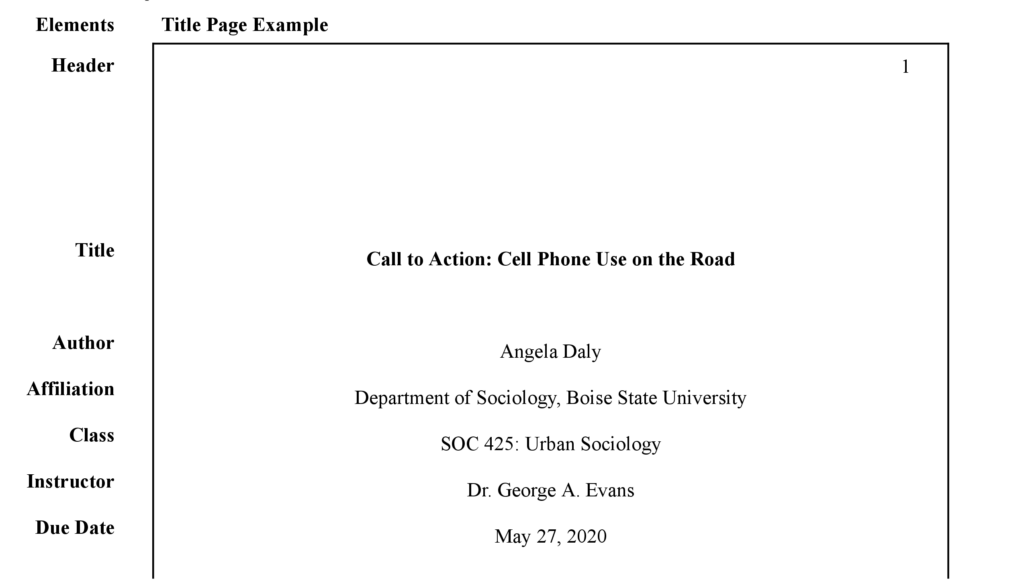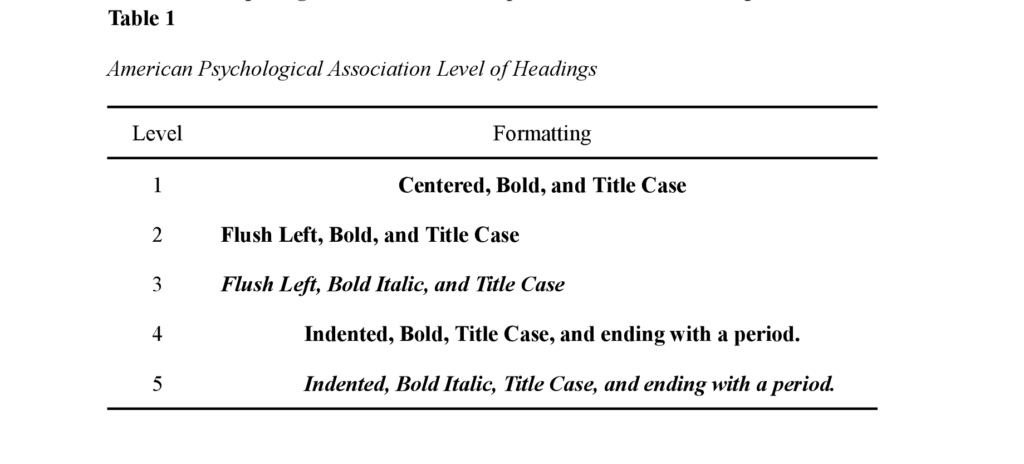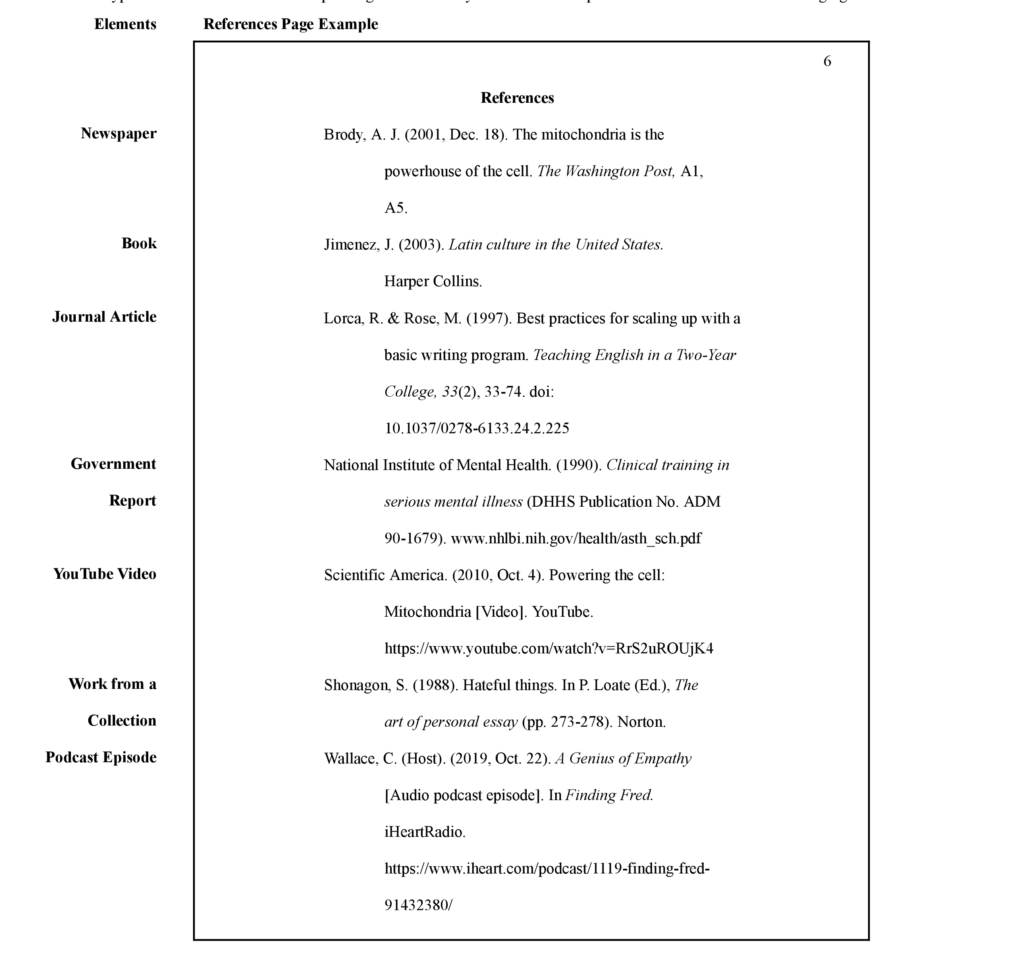In APA, every time you use the work or thoughts of another, you must cite the original author. Use of others’ ideas include summarizing, paraphrasing, and directly quoting. To cite the source, you will need an in-text citation to supplement your references page, typically consisting of the author’s last name and the date when the material was published. Page numbers are added for direct quotes. All of this information is enclosed in parentheses, separated by commas, and followed by a period.
Single Author:
List author’s last name followed by date, adding page numbers for direct quotes. For example, this quotation from Jim Dougan is found on page twenty-nine of his 2017 article:
Single Author Example
After the release of their first album, The Cows were “roundly derided as a talentless, tasteless joke” (Dougan, 2017, p. 29).
Two Authors
Two authors last names are joined by an ampersand as in:
Two Authors Examples
Hansel said goodbye to the white cat, but it was only the morning sun shining upon the chimney (Grimm & Grimm, 1812).
Three or More Authors
List the first author’s last name followed by the abbreviation “et al.” (and others). In this example by John Ramage, John Bean, and June Johnson in their 2012 article, John Ramage is listed as the first author:
Three or More Authors Example
A key component of Aristotle’s classical argument was the rhetorical triangle: the message, writer or speaker, and audience (Ramage et al., 2012).
Organization or Group Author
If no author is listed and or the source is published by an organization or group, list the group’s full name in the text or citation, followed by the abbreviation if well known. Use the acronym for every subsequent citation.
Organization or Group Author Example
According to the American Psychological Association (APA), abbreviations are ok if the abbreviation is well known (2019). After introducing the abbreviation, they recommend using it for every other in-text citation (APA, 2019).
Narrative Citation
If the author’s name, publication date, and or page numbers are given in the sentence, omit them from the following in-text citation. For example: if you introduce the author and date before quoting, summarizing, or paraphrasing, then only the page numbers are included at the end of the sentence.
Narrative Citation Example
According to music critic Mark Prindle (2017), Minneapolis rock combo The Cows are an acquired taste (p. 29).
Unknown Author
If the author’s name is unknown, include a shortened version of the publication title in quotations:
Unknown Author Example
Minneapolis rock combo The Cows are widely considered to be an acquired taste (“All Music Guide,” 2017).
Block Quotations
A direct quotation of 40 or more words is introduced by a colon, started on a new line, and indented a half-inch from the left margin. Do not indent the first line, add quotation marks, or adjust line spacing. Include the parenthetical citation after the final period or punctuation mark of the block quote.
Block Quotations Example
Peterson and Poulsen’s (1998) study found the following:
Mitochondria are known as the powerhouses of the cell. They are organelles that act like a digestive system which takes in nutrients, breaks them down, and creates energy rich molecules for the cell. The biochemical processes of the cell are known as cellular respiration. (p. 199)
Omissions or Alterations to Quotations
Place an ellipsis (…) where parts of a quote were omitted in the middle of the sentence (e.g. “Grammar… is the study of writing techniques”). Ellipses are not necessary to indicate the first part of a phrase was omitted. Put brackets [text] around necessary alterations made to quotations for clarity, as in “[They] said…”
Common Knowledge
Facts or information that you already know, is widely available, and undisputed is considered common knowledge, which does not require an in-text citation. Common knowledge includes biographical information, dates of historical events, and other information that reasonable readers would accept as fact.
Common Knowledge Example
Abraham Lincoln was the 16th president of the United States.


